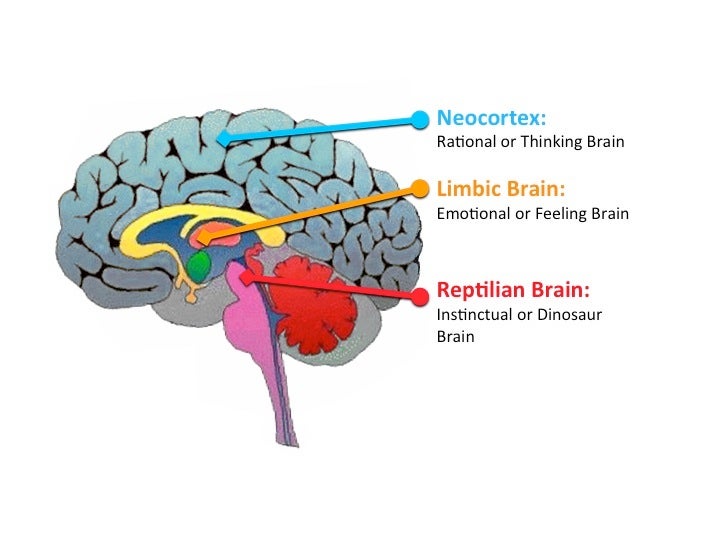In September of 2009, Simon Sinek gave a great TED Talk about how great leaders inspire action. Apparently, Donald Trump or someone in his campaign was paying attention. It’s hard to classify Donald Trump as a great leader, except that despite all of the horrible facts that have come out about him, his character and his past he still is hanging in there, and will almost certainly take several states on Election Day.
How is this possible? Countless times the media asks the question: How can any rational person still vote for this man for President? The answer is really quite simple, yet scientific in nature.
The Golden Circle
Sinek calls the concept “the golden circle.” The questions why, how and what make up this circle. The what is easy for most companies and individuals to answer. “What do you do?” someone asks.
“I am a…” and the respondent fills in the blank with their occupation or a hobby, or whatever it is they want to convey to the person asking the question. Even when asked “how do you do that?” most people can answer pretty easily.
The most difficult of these questions is “why?” Most people do not know or understand the motive for what and how they do things. Typically we communicate the simple thing first, and move toward the less concrete “what” question after explaining the how. We say what we do, how we are different, and then expect people to take action.
In politics it works this way: “I am a Democrat running for President of the United States. I want to work to prevent the rich from getting richer, the poor from getting poorer, and I want to implement policies that will shore up the disappearing middle class. How will I do that? Higher taxes on the rich, tax breaks for the poor, and creating programs that aid job creation for those who most need jobs. Will you vote for me?” This information may or may not be factual, but it is uninspiring.
Inside Out
Great leaders communicate the opposite way. “ I think America is a great nation that has gone the wrong direction. I want to make America Great Again. How? By throwing out the old system, securing our borders, bringing jobs that have gone overseas back home, giving tax breaks to those who create jobs, and focusing on getting us out of debt. I’m a Republican running for President. Want to vote for me.”
This approaches the same information from the “why” question first. The underlying motivation is explained with an outline of how the why will be accomplished. Notice the why does not consist of a detailed list. “Martin Luther King gave the ‘I Have a Dream’ speech not the ‘I have a plan speech,’” says Senek. The how in this case is a general list of things to be done, yet we still are given no hints on how they will be accomplished.
That is because our brains already resonate with the statement not because it is any more valid than the other, but because it lines up with our biology.

Three Parts of the Brain
Our brain consists of three parts, and the newest part, the neocortex, is the top and deals with all rational and analytical thought and language. This is the part of the brain that resonates with the “why.”
“The inner brain has no capacity for language, but is responsible for all of our feelings like trust and loyalty. It’s responsible for human behavior including decision making.,” Sinek explains. “In other words, when we communicate from the outside in, yes, people can understand vast amounts of complicated information like features and benefits and facts and figures. It just doesn't drive behavior.“
So when you talk from the inside out, you speak to the part of the brain that controls behavior, and then people rationalize their decision. People will often say it just feels right, or they have a gut feeling about their decision even when facts and figures discount its validity.
The goal of this kind of sharing from the inside out is not to get people to buy what you do, but to influence people to believe what you believe. This is the same kind of great leadership that helped Hitler rise to power. First, citizens became convinced that his motives were pure: to make Germany, then a struggling nation, a great world power again.
People who were struggling resonated with his message, and then rationalized his actions as for the greater good in the long run, justifying horrific acts as short term costs necessary to achieve a greater good.
People don’t vote for what politicians do. They vote for why they do it. Why is this important? Because of the law of diffusion of innovation. The first 2.5% of population are innovators. The next 13.5% are the early adopters. The next 34% are the early majority. Once you crack the first 15-18%, the early majority will begin to follow the early adopters.
So to gain the Republican vote, all Mr. Trump had to do initially was to crack the first 18%. Because his campaign was treated as a joke, he did so easily by speaking to those innovators and early adopters from his why.
Trump may have horrible foreign policy ideas. He may be racist, sexist, a misogynist and many other negative things. The one quality that set him apart and allowed him to carry states and lead thousands despite negative media was a simple reversal of the golden circle.
Mr. Trump spoke from the inside out, and that allows many of his followers to rationalize some horrific things. It will take him breaking their trust and damaging their feelings by betraying the why he has presented before they will give up on him.
You don’t have to be a great man to be a great leader. Maybe that’s been the secret to the success Trump has had all along.
